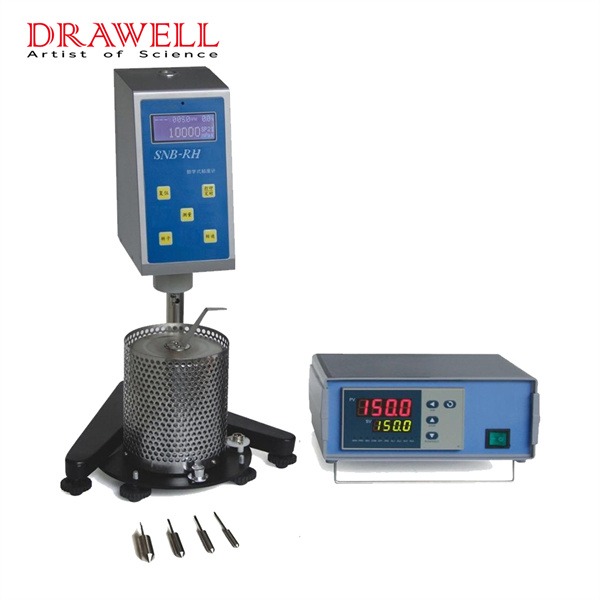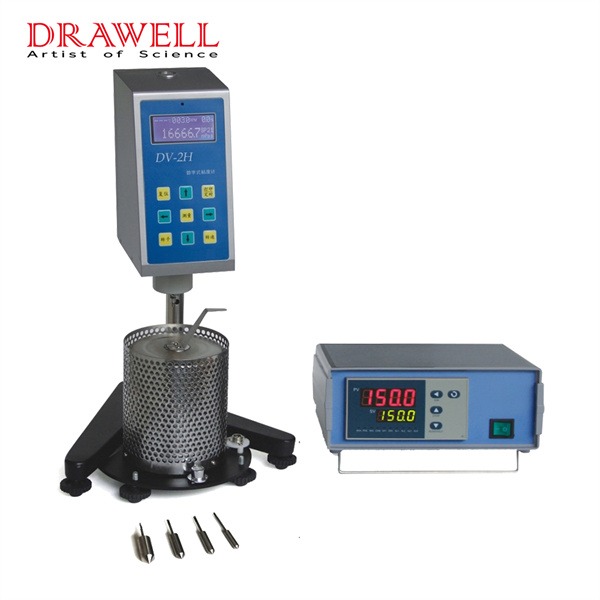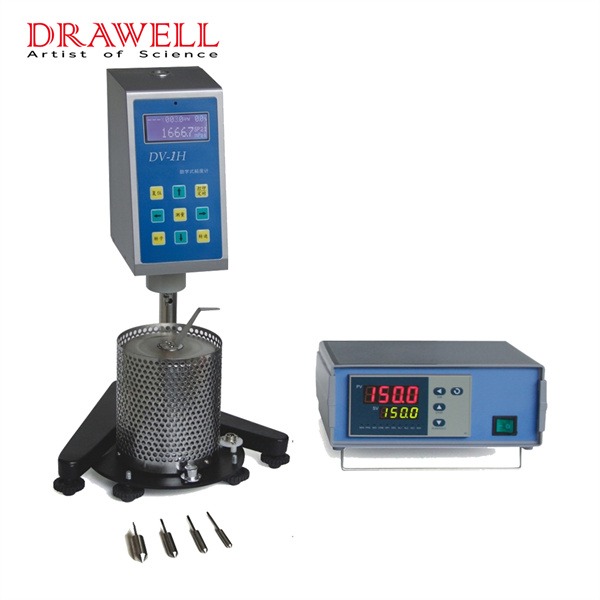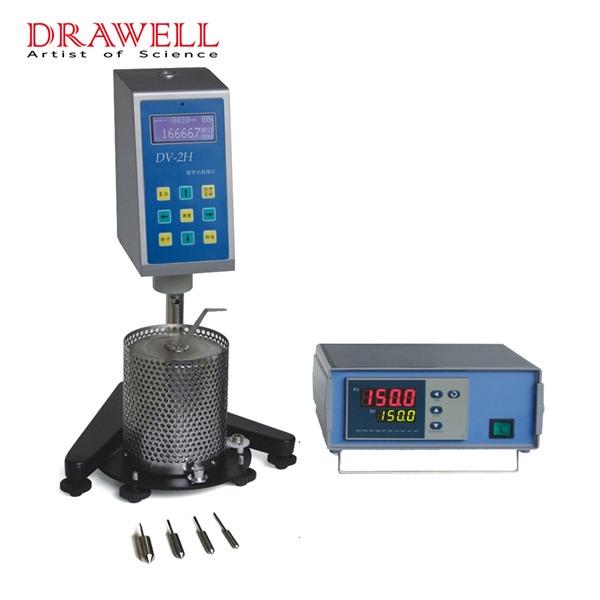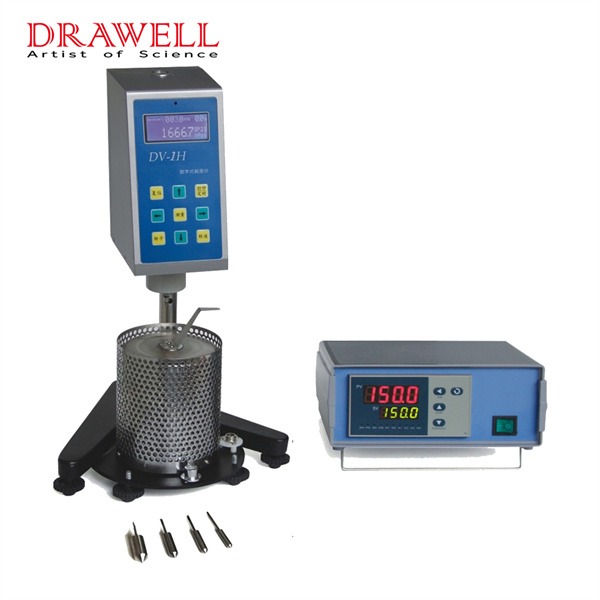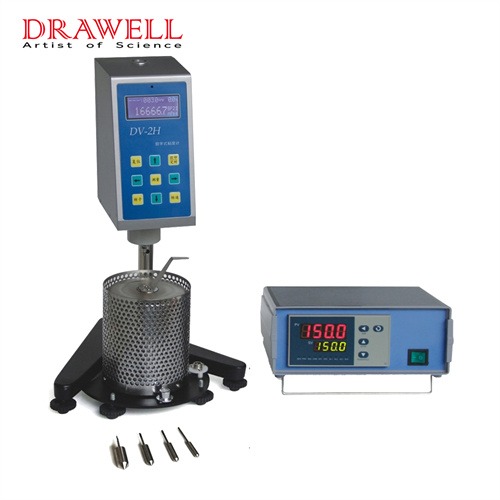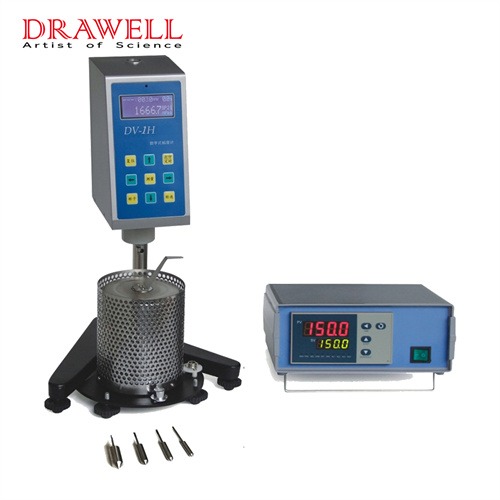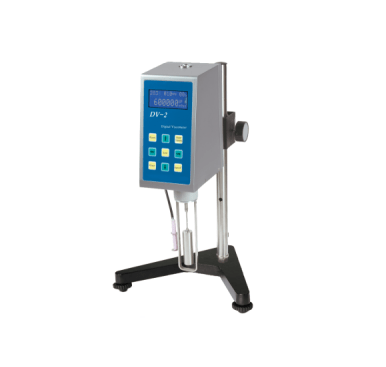With the development of science and the improvement of industrial production, measuring the viscosity of substances has become essential. A Rotary Viscometer can be used to measure the viscosity and flow behavior of polymer liquids.
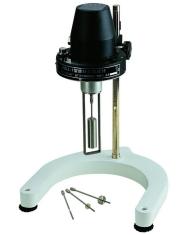
Because most polymers are processed under viscous flow conditions, it is essential to grasp the performance law of dense flow state in the polymer production process to determine polymer viscosity.
In the process of processing and molding, we use the most is Rotary Viscometer. So what is a Rotary Viscometer? What type is he? What are the best Rotary Viscometer parameters?
What is Rotary Viscometer?
The rotational viscometer measures the viscous resistance and dynamic viscosity of the liquid.
The rotational viscosity measurement method pioneered by the Brookfield family in the United States uses its unique relationship between the shear and resistance generated between the rotor and the fluid to obtain a new viscosity value, creating a precedent for the measurement of dynamic viscosity.
The Brookfield family designed the world’s first kinematic viscometer, also known as a rotational viscometer, and today’s Brookfield viscometer under their family name. Brinell is also the abbreviation of the name of the Brookfield family.
Starting from the dial-type viscometer, the rotational viscometer has undergone 75 years of transformation and upgrading, and its performance has improved. Later, the digital viscometers DV-I, DV-II, and DV-III gradually appeared. Great strides have been made in measurement so that the viscosity measurement is not only a simple measurement of viscosity but also to measure other fluid properties, such as thixotropy.
Types of Rotational Viscometers
Drum Viscometer
As its name suggests, this viscometer is a flat-bottomed cylinder on the outside, with a cylinder in the center of the coaxial. Between the cylinder and the slit, there is a slit formed by two mutually parallel surfaces, and the polymer liquid is located in the slit.
It is driven by the stepless governor to make the cylinder rotate. The cylinder is suspended on a force-measuring device and connected to it by a spring. When the cylinder rotates, the polymer liquid in the slit flows due to shearing action. The viscosity of the body fluid drives the cylinder to turn until the torque of the cylinder is balanced with the spring force and stops rotating. A particular angle θ rotates the barrel.
When it is balanced, the shearing action of the liquid in the drum viscometer also reaches a stable state, and then through the torque of the cylinder and the rotational speed of the cylinder, the shear force and shear at each position in the annular seam can be calculated by formulas rate.
Vertebral-plate viscometer
The vertebral-plate viscometer consists of an upper cone and a lower disc. The centers of the cone and the circular plate are on the same axis, and both the cone and the circular plate are rotatable.
Slightly different from the rotating drum viscometer, the polymer melt is in the slit formed by the cone and the circular plate with an angle θ. When the circular plate is rotated, due to the viscosity of the liquid, it will drive the cone to rotate. Under the condition, the cone stops spinning after turning at a certain angle.
Falling Ball Viscometer
A falling ball viscometer is also a method of measuring polymer viscosity, but it is rarely used to measure melt viscosity.
Its limitation is that primary data, such as shear force and shear rate, are not readily available. During the ball’s movement, the value of each part Y in the liquid is not uniform, and the data processing is also tricky.
Therefore, it isn’t easy to comprehensively analyze non-Newtonian fluids. The falling ball viscometer is only suitable for Newtonian fluids, and the maximum shear rate near the ball can be estimated as 3v/2R (v is the speed of the ball falling. R is the radius of the ball). During measurement, the shear rate in the body fluid is usually below 0.01 per second, and the polymer melt can generally be considered a Newtonian liquid at such a rate.
Main Parameters of NDJ-8S Rotational Viscometer
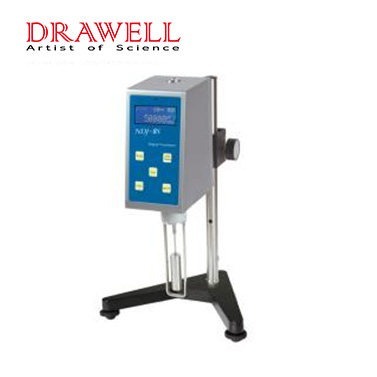
- Measuring range: 10 ~ 1×10^5 mPa.s
- Rotor specifications: 0, 1, 2, 3, 4, and No. 5 rotors (No. 0 rotor is an option, which can measure low viscosity to 0.1 mPa.s)
- Instrument speed: 6 rpm, 12 rpm, 30 rpm, 60 rpm
- Measurement error: ±5% (Newtonian liquid)
- Power supply: 220V ± 10V; 50Hz
- Net weight: 1.5 Kg
Selection of range, coefficient and rotor, and speed
(a) First, approximately estimate the viscosity range of the liquid to be tested, and then select the appropriate rotor and speed according to the range table;
For example, the following combinations can be selected when measuring a liquid of about 3000mPa·s:
Rotor No. 2 – 6 rpm
or No. 3 rotor – 30 rpm
(b) When NDJ-8S rotational viscometer cannot estimate the approximate viscosity of the liquid to be tested, a higher density should be assumed, and NDJ-8S rotational viscometer should use the rotors from small to large, and the rotational speed from slow to fast. The principle is to use a small rotor (higher rotor number) for high-viscosity liquids and slow pace; for low-viscosity drinks, use a large rotor (low rotor number) and fast speed.
(c) Coefficient: When measuring, the reading indicated by the pointer on the dial must be multiplied by the specific coefficient on the coefficient table to obtain the measured viscosity (mPa·s).
That is: η=K·α where
η=viscosity
K=Coefficient
α = reading pointed by the pointer (deflection)
(d) Correction of frequency error: When the frequency of the power supply is inaccurate, the NDJ-8S rotational viscometer can correct it according to the following formula:
Actual viscosity = indicated viscosity × nominal frequency / actual frequency.

